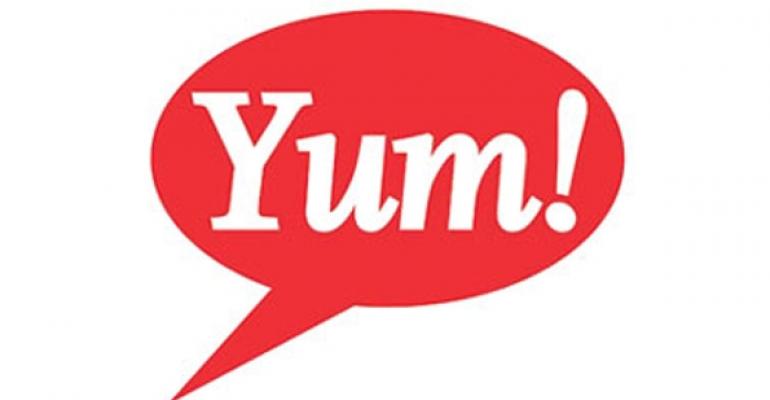Yum! Brands Inc. steadily has grown more optimistic for its prospects in its Yum! Restaurants International, or YRI, division, but plans laid out Wednesday at its YRI Investor Day event were even more bullish, according to securities analysts who attended the meeting.
Yum officials reaffirmed their confidence that YRI could produce annual profit growth of at least 10 percent, and they detailed the 14,000-plus-unit division’s plans to double its annual net openings over the next five years as well as shift the bulk of its expansion to emerging markets like Russia and Africa.
RELATED
• Yum franchisee gives advice on restaurant financing
• Analyst: Recovery likely for Yum
• More quick-service restaurant industry news
Yum’s growth abroad in YRI and its separate China and India divisions comes primarily from KFC and, to a lesser extent, Pizza Hut. Its Taco Bell chain has yet to become an international growth vehicle.
Through the first half of 2012, Louisville, Ky.-based Yum has raised its target for gross new-unit development this year in YRI from 800, first cited in its fourth-quarter earnings call of 2011, to the 900-unit target mentioned in the second-quarter call. According to research notes from Andy Barish of Jefferies & Company and David Tarantino of Robert W. Baird & Co., YRI’s pace of openings and closures is expected to yield about 500 net openings for 2012.
Tarantino wrote that management is allocating more people and money to YRI to increase that rate to 1,000 net openings annually within five years, mostly through accelerated development of underpenetrated markets and with Pizza Hut delivery restaurants.
“The faster pace of expansion seems justified by healthy unit-level returns on capital, with cash payback periods running less than three years — similar to robust China figures — in a range of key growth markets,” Tarantino wrote.
Barish noted that Yum is targeting $1 billion in annual operating profit from YRI by 2015, which would be roughly a 10-percent compound annual growth rate for the nearly $675 million in profit YRI generated in fiscal 2011. He added that about 7 percent of that gain would come from emerging markets, and the remainder would come from YRI’s developed markets, including some company-owned territories that are looking to refranchise large swaths of their systems, such as the United Kingdom.
YRI expects to sell its Pizza Hut dine-in business by the end of 2012, which Barish estimated could improve the United Kingdom’s profit margins by several percentage points.
“Yum may also take some more company-owned interest in some emerging markets over time as they seek to grow and generate strong returns,” he wrote. “Overall, emerging markets should grow about 15 percent over this timeframe, with developed markets growing about 6 percent.”
In the past few years, Yum has taken a more capital-intensive approach to breaking into its key growth markets for YRI, notably Russia, Africa, France and Germany. Several years ago, Yum entered Russia through a co-branding agreement for KFC with Russia’s native chicken chain Rostik’s. Yum has spent the past several years rebranding those locations to be standalone KFCs, which now produce some of the highest average unit volumes in YRI.
In Africa, Yum in 2010 purchased its largest KFC franchisee in South Africa to turn that market into a training ground for its operators throughout the continent. The company said during its second-quarter earnings call that Yum would be operating in 20 African nations by the end of 2012.
France and Germany have some of the highest average unit volumes in the world for KFC, despite having only a couple hundred stores in those markets and little to no television advertising. Yum executives said during the first-quarter earnings call that the company would have fewer company-owned stores in France and Germany going forward but still would be heavily invested with a “business rental” model, in which Yum holds the leases for new restaurants and charges franchisees a percentage of sales.
According to Tarantino’s research note, YRI officials said the combined operating profit of just Russia, Africa, France and Germany could grow from $99 million in fiscal 2011 to about $260 million by 2015.
Tarantino also noted that management has a bullish outlook on other emerging markets like the so-called CIVETS countries of Columbia, Indonesia, Vietnam, Egypt, Turkey and South Africa, as well as Brazil, the Philippines and Thailand.
In addition to its 14,105 restaurants in YRI, Yum also operates or franchises 15,987 locations in the United States, 5,251 in China, and 479 in India.
Contact Mark Brandau at [email protected].
Follow him on Twitter: @Mark_from_NRN

